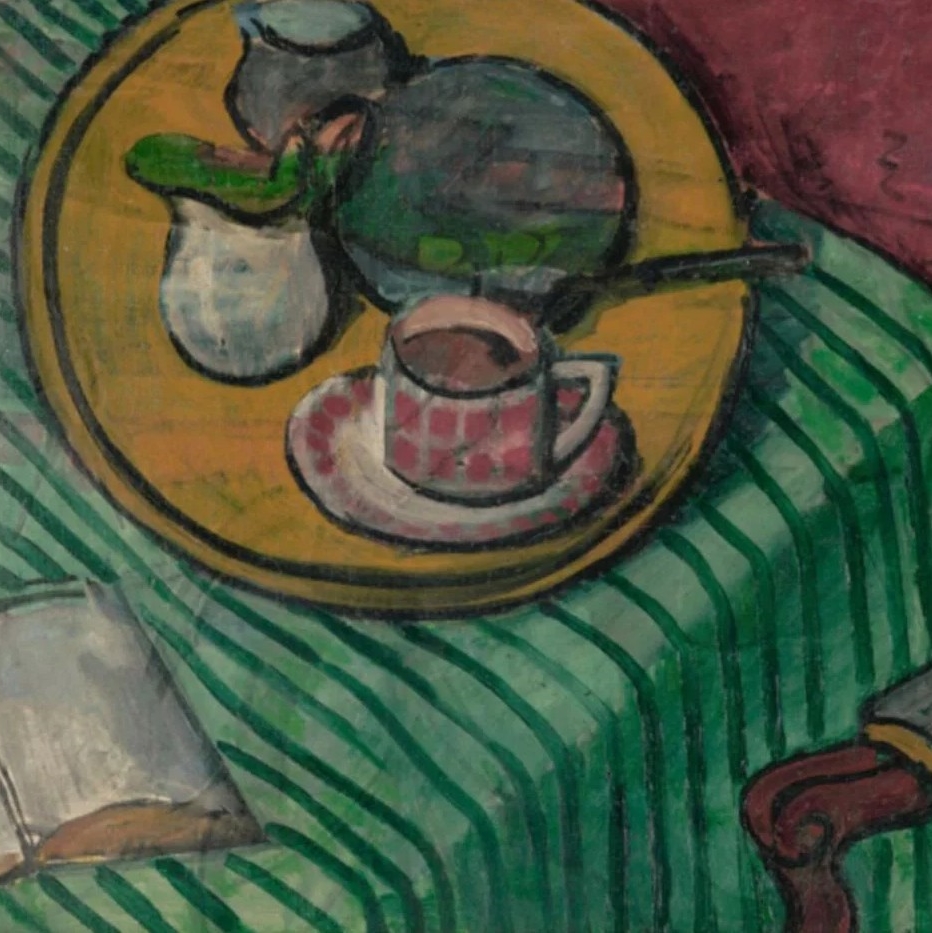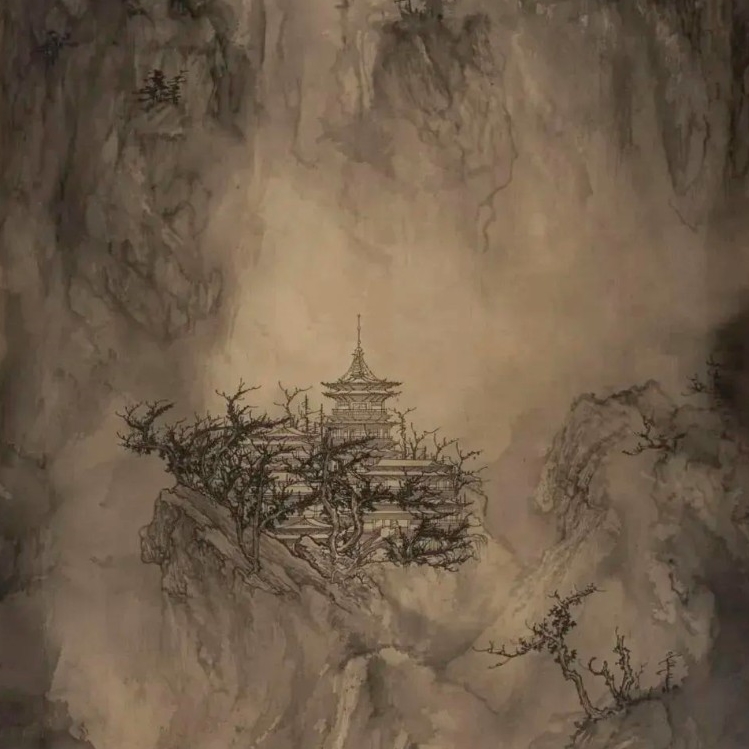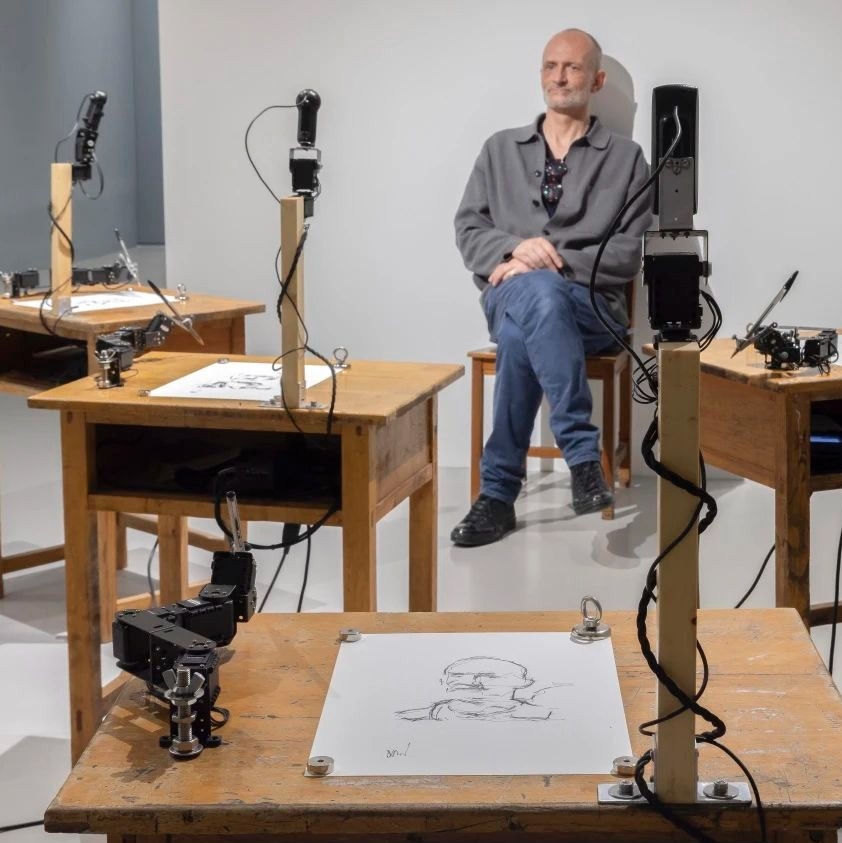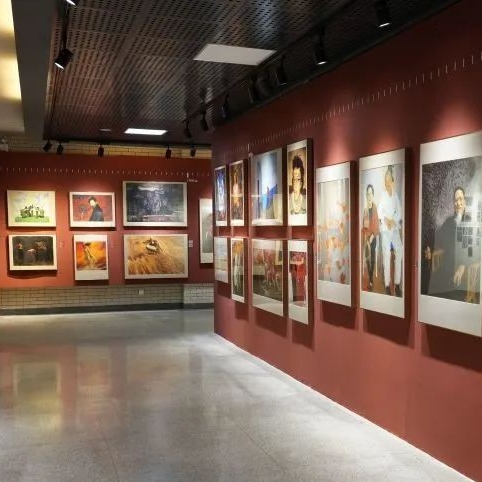
The Click Ten Art Space presents its latest exhibition “From Antung to Dandong: Rafts, Broken Bridges and Passers-by on the Yalu River”, focusing on “locality” and “border”. Curated by architect and artist Liang Chen, the exhibition features the works and projects by 16 artists and groups based in and out of Dandong from different perspectives. The full list of artists includes Kazuhiro Okada, He Xiangyu, Hong Xing, Jia Aili, Liang Chen, Liang Rui, Tan Zhenbang, Stylus, Wang Ningde, Yin Ji’nan, Zhang Tuitui, Zhao Liang, Gazetteer-novel collective, Drawing Architecture Studio, Sun Haiting, and Zhang Shuo. The exhibition will remain on view till June 5, 2022.



Exhibition View
The rich historical heritage in Dandong has made it an entry point into the intertwined space and time of the Northeast China, and also an international border fortress of multi-cultural exchange and conflict: From the Sino-Korean Plateau to the Tan-Lu Fault Zone, from the volcanic activity of the Changbai Mountains to the formation of the Yalu River, from the construction of the Great Wall of Yan during the Warring States Period to the Liutiaobian site, the birthplace of the Manchu Qing Dynasty, from the log rafts going downstream to the "wood city" at the estuary for timber trade; from the Sino-Japanese naval war (1894-1895) to the Russo-Japanese war (1905-1906), from the first stop of the An-Feng Railway which was constructed by the Japanese colonialist in China in 1904 to the last stop after their defeat in China in 1945, from the Yalu River Bridge that was blown up by the American army in 1950 to the critical port to North Korea after Korean War, from the name changed from "Antung (Andong)" before 1965 to "Dandong" after 1965, from the Protectorate General to Pacify the East in the Tang Dynasty to the Red East of the socialist allies, from the pioneer of trade and silk handicrafts before the founding of China to the star city of light industry after the founding of country and the rising of the internet-famous tourist city, Dandong is the center of Northeast Asia and the largest border city in P.R. China. For thousands of years, the Yalu River has seen countless passers-by. There were Han Chinese, Manchus, and Koreans in the raft business, and Japanese and Russian soldiers ready to attack. There were Chinese who built the Tianhou Palace, the Temple of the God of Wealth, the Dragon King Temple, and the City God Temple; Japanese who built Shinto shrines and Buddhist temples; and Danish missionaries who traveled from afar to build churches, hospitals, and orphanages. There were Soviet and American troops on the eve of the Cold War, and also Chinese people's volunteer army from all over the country.

 Exhibition View
Exhibition View
The exhibition “From Antung to Dandong—Rafts, Broken Bridges and Strangers on the Yalu River” presents fiction, poetry, painting, photography, video, installation, and other media created based on Dandong by creators from different eras. It aims to present the internal view of Dandong-born creators and etic observations of “outsiders.” The exhibitors include local research groups of cultural and historical archive in Dandong, creators-in-residence who have long been concerned with local culture, as well as Japanese writers born in Antung.
Stylus is a printing office to produce banknotes for Deng Tiehmei's anti-Japanese army (commonly known as Deng ticket). Later, Stylus became a piece of paper silently kept in the register of industrial and commercial households in Antung in the early years of liberation (1950). In 1965 A.D., for the sake of Sino-North Korean friendship, its name was changed from Antung to Dandong, though the folk preferred to call it Antung. So those who loved Antung got together and founded a studio named after Stylus. Later, The Journal of Antung History Images was published, marking a journey to collect and tell the story of Antung. Moreover, during the Spring Festival of the Year of the Tiger, Gazetteer-novel Collective initiated a 14-day art residency program in the border city of Dandong, and the results were presented as an “exhibition within an exhibition” as part of the whole project. The exhibition will be presented in three narratives by three curators, like three chapters or interpretations of a novel. After rounds of communication and collaboration between the curators, the artists, and the writers, and through three curatorial plans, we try to present “Antung-Dandong” in multiple spaces and times.
 Exhibition View of Antung Field On-site by STYLUS
Exhibition View of Antung Field On-site by STYLUS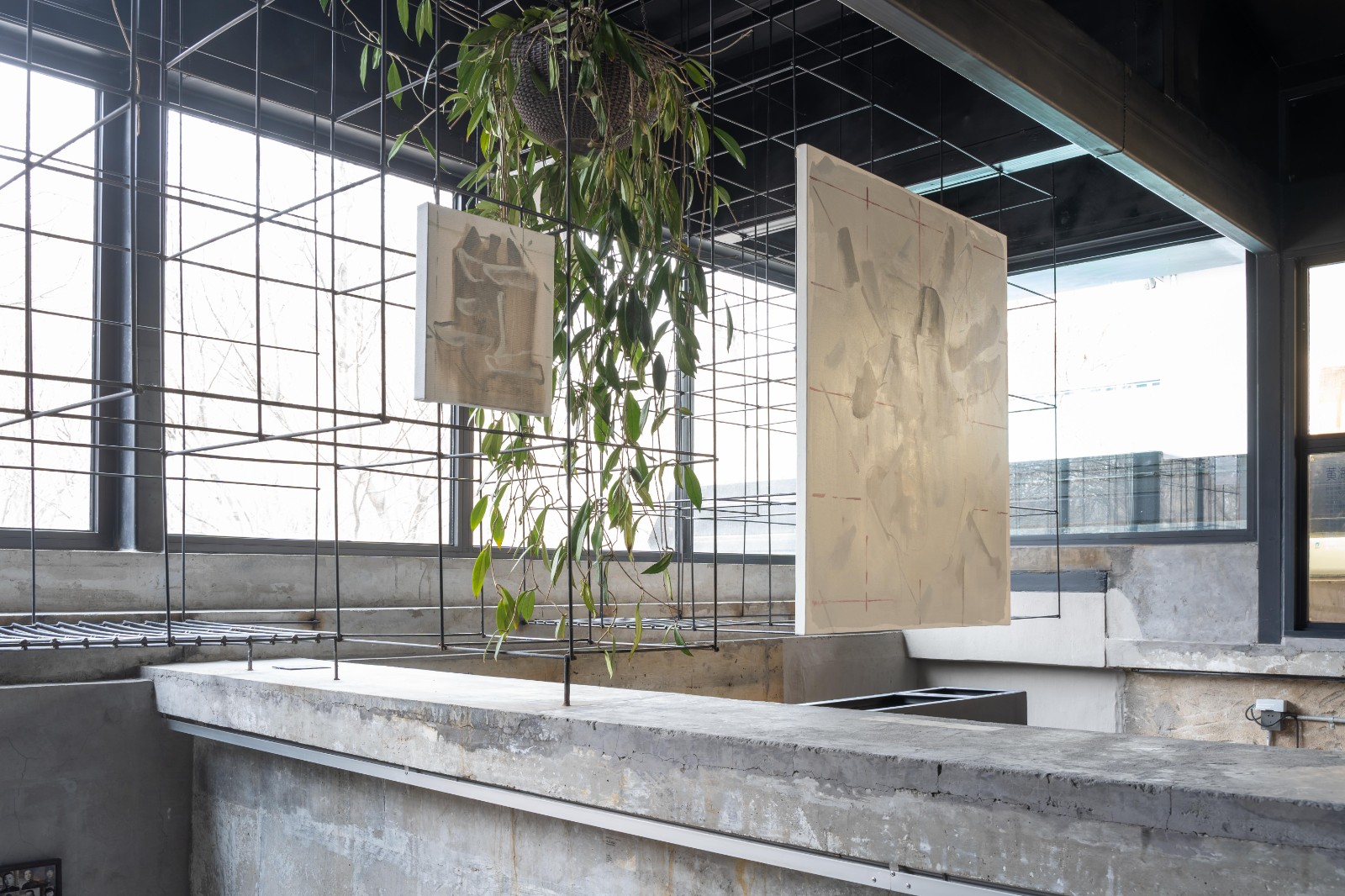
Gazetteer-novel collective, Dandong: A Novel
The artists take the history, social environment, and geo-culture of Dandong as the clues of their creation. Looking back at history, they find that the small city of Dandong by the Yalu River has experienced several post-war reorientations so that the local artists have the dual identities of spectators and witnesses. They are obsessed with the exploration of the spiritual world and the discernment and analysis of their spiritual selves and remain highly sensitive to the peculiarities of history. Jia Aili, born in Dandong in 1979, is one of them. Jia’s paintings have a sense of a free narrative, he explores the possibility of the underlying deconstructive meanings in this free narrative. He tries to naturally unfold the materials such as history, scenes, people by painting, and restore the fragments of history with contemporary values and emotional memories.
 Exhibition View of Jia Aili's Work
Exhibition View of Jia Aili's Work
The architect Liang Chen focuses on the flow and temporal accumulation of a definite collection (a specific concept, object, space, etc.) over a long period, multiple periods and large scale in his dual practice of architecture and art period, multiple periods and large scale in his dual practice of architecture and art. Since 2013, Liang began to observe his hometown Dandong, Liaoning, in the aforementioned way, which anchored the departure point and source for his work. Built on his research and project experience in Erguna, Dandong, and Xinjiang, Liang initiated interdisciplinary research "Border Project" in art, architecture, and anthropology, which focuses on geographical borders, namely the forefront of knowledge production and exchange, to further explore the broader borders of culture, history, language, and social milieu.
 Installation View of Liang Chen's Work
Installation View of Liang Chen's Work
The exhibitors experiment on different media and attempt to tap into the cultural memory of Dandong’s historical changes. The young poet Hong Xing has devoted himself to more contemporary poetry practice, his work Might get bombarded in my hometown chooses a homonymous poem as the blueprint, and the Braille installation as the main body, to present together with an audio reciting the entire poem. The graphic designer Zhang Shuo uses the text symbols of more than 100 years in Dandong’s historical changes, he refers to the visual characteristics of the content dissemination and sales materials of the corresponding period, and organizes the nylon and cotton fabrics to make a visual field of “Welcome to Antung” which integrates the mixed memory of each period. The photographer and artist Zhang Tuitui chooses the medium using the physical body and performance. In her work The Green River, she tore a piece of cloth of 21 meters in length into two parts in the middle. Then she sewed them together with a needle and thread. The “demarcation line” exposed by the needle and thread is also a process to close the invisible disseverance. Her body is used as a bridge to cross the “river”. The Architecture Designer, Liang Rui uses aluminum lunch boxes as a vehicle, to re-mimic the de-individualization and repetitive nature of the collective ecological environment. The smell of burned coal which is a means of production is used to link the visitor’s memory and perception. Born in 1937 in Antung, Kazuhiro Okada worked as a newspaper reporter and editor. His works are created with Manchuria and Manchukuo as the main clue, based on the historical events in his birthplace. After returning to Japan, he wrote: “Manchurian Peace Hotel” with the story of what happened in Antung.
 Hong Xing, Might get bombarded in my hometown
Hong Xing, Might get bombarded in my hometown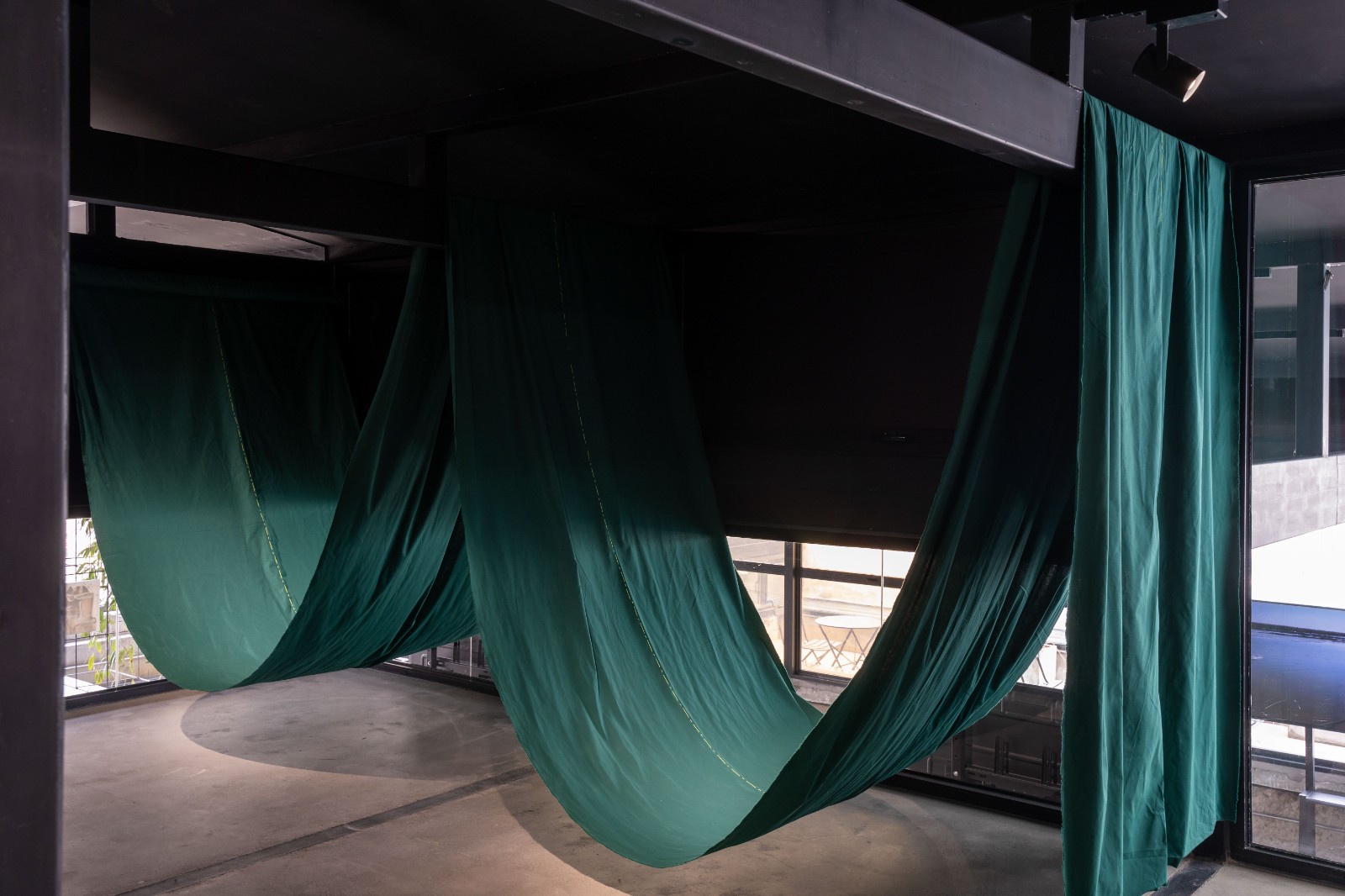 Zhang Tuitui, The Green River
Zhang Tuitui, The Green River Left: Kazuhiro Okada, Manchurian Peace Hotel, Middle: He Xiangyu, Evidence and The Yellow Swim Caps, Right: Wang Ningde, The Opposite Bank
Left: Kazuhiro Okada, Manchurian Peace Hotel, Middle: He Xiangyu, Evidence and The Yellow Swim Caps, Right: Wang Ningde, The Opposite Bank
The works contain detailed visual records of the Sino-North Korean border and imaginations of the national landscape of North Korea. Dandong-born photographer Wang Ningde’s work The Opposite Bank is based on a photograph taken across the river of North Korea. He Xiangyu, who was born in 1986 in a small town on the border, made a series of delicate sculptures by fragments of patinated tubing and pieces of ironmongery obtained in a black market, he created several “copies” after the found objects, to re-create and haptically consider their complex and compressed sculptural forms. Shards of North K. by Drawing Architecture Studio, through the scattered images circulating on the Internet, the work imagines and depicts the ordinary street scenes in an ordinary North Korean city and the daily lives of ordinary people from an individual perspective. In the work By the River of the documentary filmmaker Zhao Liang, a portion of the video comes from his long-term photography of a North Korean village across the Yalu River. The other part is re-edited from the footage of Zhao Liang’s Return to the Border (2004), which records the daily life and interaction of people on both sides of the Yalu River. Haiting Sun focuses his work on architectural design and cultural heritage preservation. Sun used the Yalu River as a geographical cue to observe the involution between the border city Dandong and the border river Yalu River through still images.
 Shards of North K. by Drawing Architecture Studio
Shards of North K. by Drawing Architecture Studio Zhao Liang’s Return to the Border (2004)
Zhao Liang’s Return to the Border (2004) Yin Ji'nan, My Yalu River
Yin Ji'nan, My Yalu River
The works in the exhibition include private memories of Dandong by scholars from the Chinese Korean ethnic community and young directors’ visions of Dandong’s future. Born in Dandong, Yin Ji’nan is an art historian with multiple identities. His work My Yalu River talks about his memories and autobiography from his birth in Dandong to his pre-college days. Tan Zhenbang was born in Dandong in 1989. His work The Couple Is Not the Same Birds is a documentary film based on the life of an ordinary middle-class family in China shows the status of the second marriage of the filmmaker’s parents, as well as their views on marriage and love from the point of views of a couple who have been divorced for fifteen years.
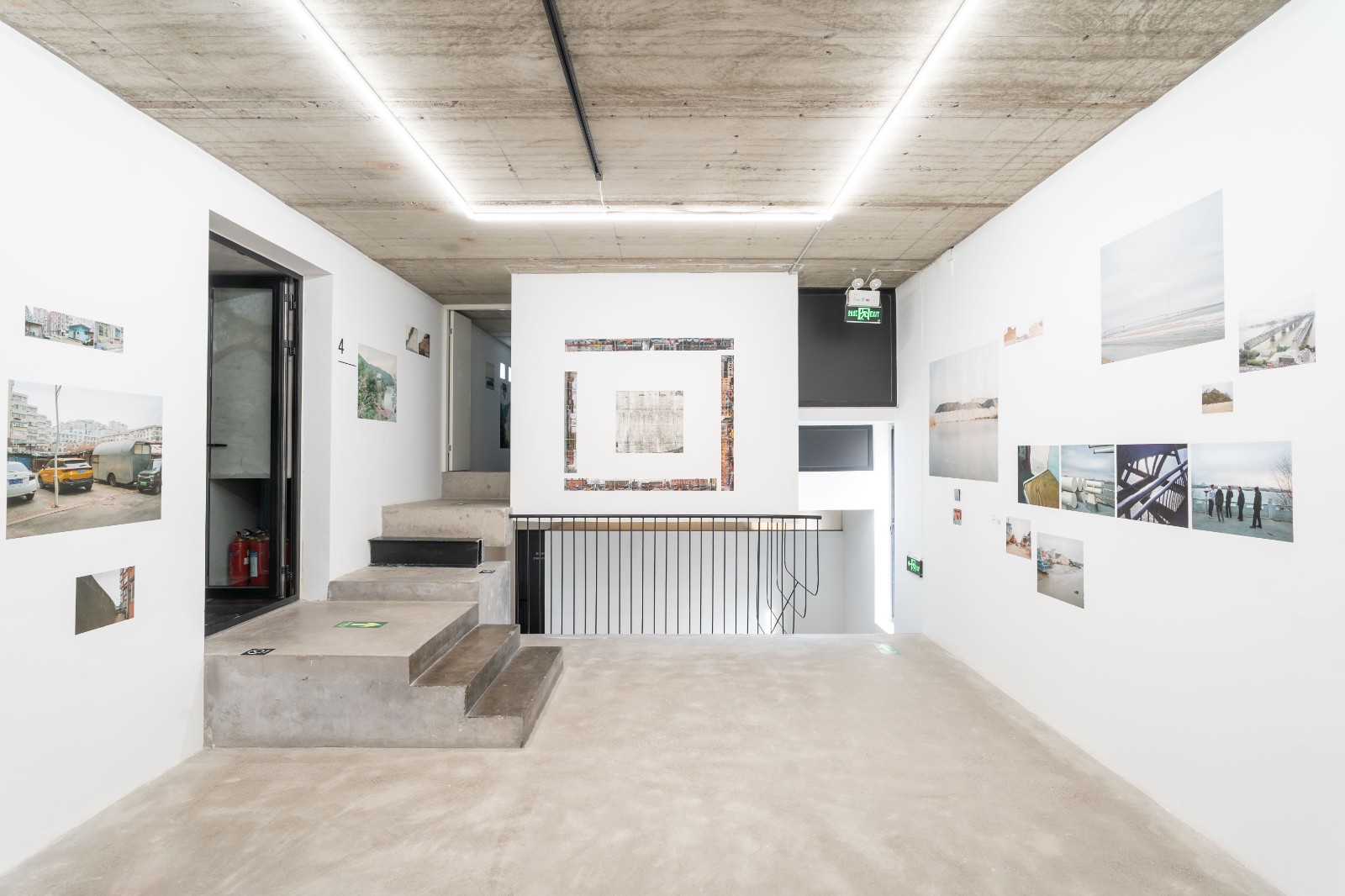 Sun Haiting, The Last Three Months of 2021
Sun Haiting, The Last Three Months of 2021 Tan Zhenbang, The Couple Is Not the Same Birds
Tan Zhenbang, The Couple Is Not the Same Birds
All their personal histories outline the historical space of Dandong (Antung). Therefore, this exhibition presents historical facts and archives, and more importantly, hopes to assemble, reconstruct and recreate local landscapes through the artists’ unique perspectives. In addition, the exhibition miniaturizes the spatial geography of the Yalu River in the exhibition hall, trying to explore new possibilities of local studies and spatial narratives.
In recent years, the reform and opening up, nuclear tests, and the phenomenon of defectors in North Korea have gained widespread attention in society. The story near the border may seem far away from us, but it precisely outlines the territory of our motherland and the spatial scope between countries. It is the borders that define things. This exhibition is also part of the “Border Project” based on interdisciplinary research in art, architecture, and anthropology. As an important phenomenon in the postmodern global cultural landscape, the disparity in time and space between contemporary art originated from the modern West and the local culture is gradually dissolving, reconstructing the order and boundaries of global public culture by referencing each other. Therefore, the study of local knowledge has become necessary for understanding the specific context of contemporary knowledge generation and is an essential path for developing locally-based contemporary Chinese art in globalization. “Border Project” focuses on the vast local cultural resources in China, especially the borderlands at the forefront of knowledge generation and exchange. From the geographical borders, the exhibition attempt to take an interdisciplinary view to observe the boundary of culture, history, language, and social psychology, which is broader and more complex, and explore more possibilities for artistic innovation.
About the exhibition

Curator: Liang Chen
Dates: March 13-June 5, 2022
Organizer: Click Ten Art Space
Co-organizer: Wind H Art Center
Address: 31a Wanhongli, South Gate, 798 Art Zone, Chaoyang, Beijing
Courtesy the artists and Click Ten Art Space.


